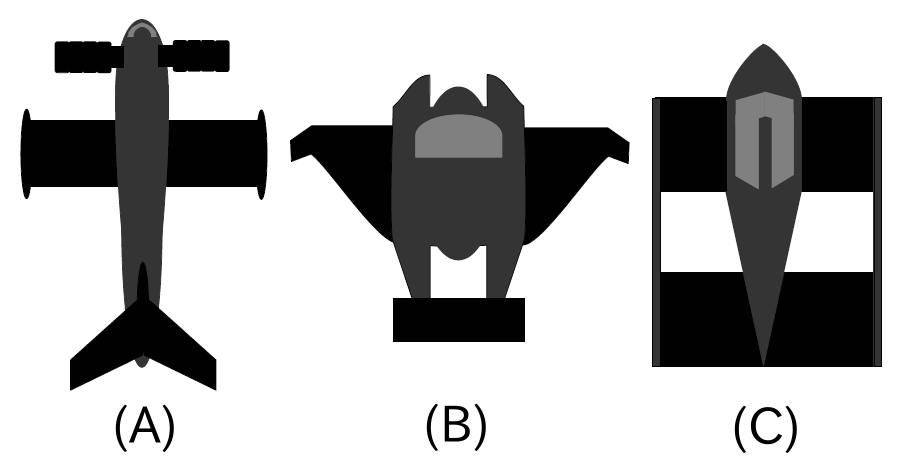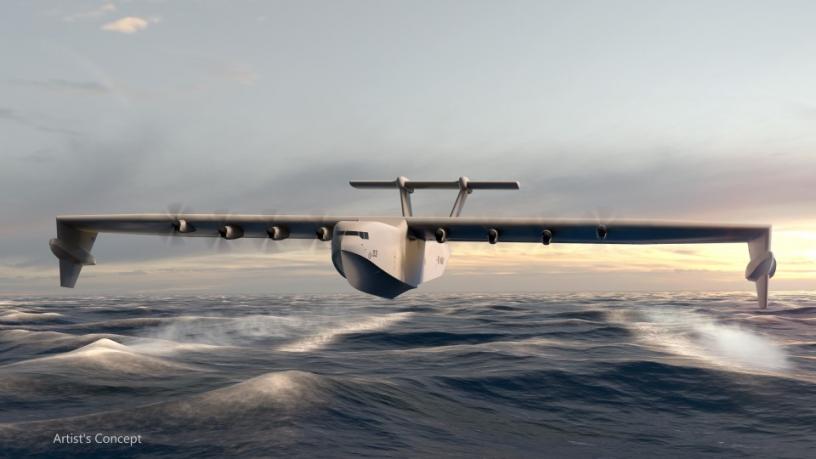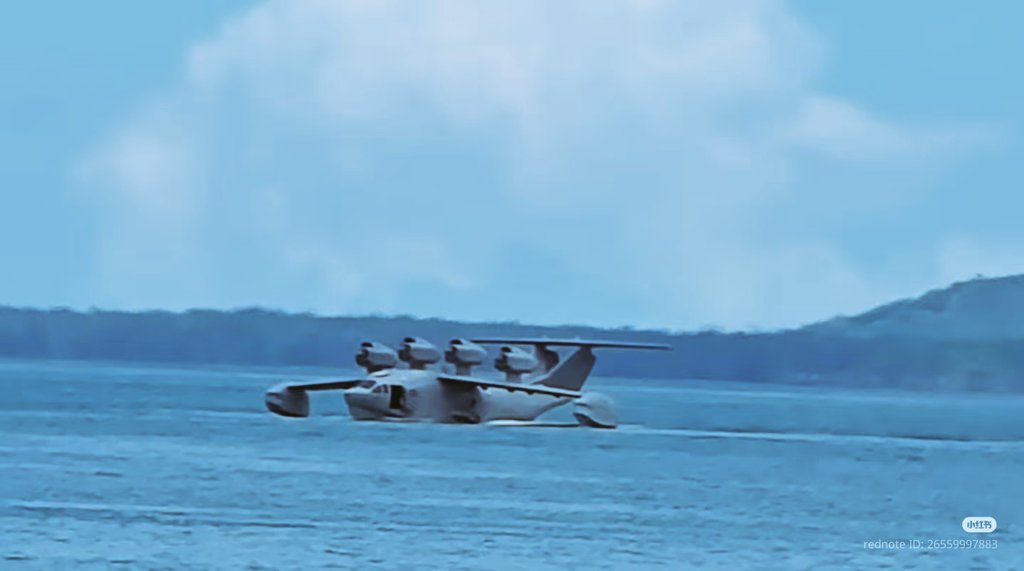At the end of June 2025 images appeared on social media showing a mysterious Chinese wing-in-ground-effect (WIGE) vehicle, dubbed the ‘Bohai Monster’ by observers. As reported by the South China Morning Post, one of the images shows a full view of the aircraft above the water surface, while another shows it lying on a pier from behind.
The platform has a boat-shaped hull with a T-tail: a classic configuration for WIGE vehicles, also known as ekranoplans. Buoyancy bodies are mounted on the wing tips, while four engines are mounted on the top surface of the wings. While there is speculation about the type of engines, most observers assume they are jet engines. However, this so-called WIGE design is not a technical revolution; the Soviet Union first developed and tested the technology in the 1960s.
The technology: faster than ships, more stealthy than aircraft
Ekranoplanes utilise what is known as the ‘ground effect’, which involves the interaction of the airflow under the wings with the surface below (water or land) to create an air cushion with high static pressure. This effect drastically reduces air resistance and, compared to higher-flying aircraft, enables much more efficient transport of cargo with lower fuel consumption.
The advantages of WIGE vehicles for military and logistical operations are considerable. Due to their high speed, they are particularly suitable for the rapid transport of troops and materials. Their high efficiency also allows them to transport heavy loads over long distances. Since they operate only a few metres above the water surface, they remain below the detection range of many radar systems and thus evade conventional air defence systems. Another advantage is their comparatively high weather resistance: unlike helicopters or smaller boats, they can also be used in rough seas.

China’s ambitions in the WIGE sector
China has been investing in WIGE and similar technologies for years. A smaller WIGE prototype from the China Ship Scientific Research Centre was unveiled back in 2023. With a take-off weight of 4.5 tonnes and a speed of 240 km/h, it was designed for rescue operations and passenger transport between islands, for example in the South China Sea.
However, the ‘Bohai Monster’ that has now emerged seems to be in a completely different league and is comparable in size to the AG600 amphibious aircraft, which has a take-off weight of 60 tonnes. Such a platform could play a crucial role in rapidly supplying maritime outposts and deploying equipment – a capability that, according to the South China Morning Post, would significantly expand China’s logistical reach.

The United States also rediscovered this technology from the Cold War era. Washington recognised the logistical advantages of WIGE vehicles and launched its own ambitious programme. The Liberty Lifter concept was developed from mid-2022 under the leadership of the US Defence Advanced Research Projects Agency (DARPA).
The aim was to create a strategic heavy-lift transporter capable of carrying payloads comparable to those of the C-17 Globemaster III airlifter, ie over 70 tonnes. Unlike pure ekranoplans, the Liberty Lifter was designed to operate in hybrid mode: intended to cover most of the distance using efficient ground effect, but also capable of climbing to altitudes of up to approximately 3,000 m to avoid rough seas or obstacles.
Two well-known defence contractors, General Atomics and Aurora Flight Sciences (a subsidiary of Boeing), were commissioned to develop competing Liberty Lifter designs. Although the project was completed this year, DARPA decided against producing a Liberty Lifter demonstrator. According to programme manager Christopher Kent, the technology used in the project will be used for further developed designs in the near future and will not be implemented as part of a Liberty Lifter programme.


